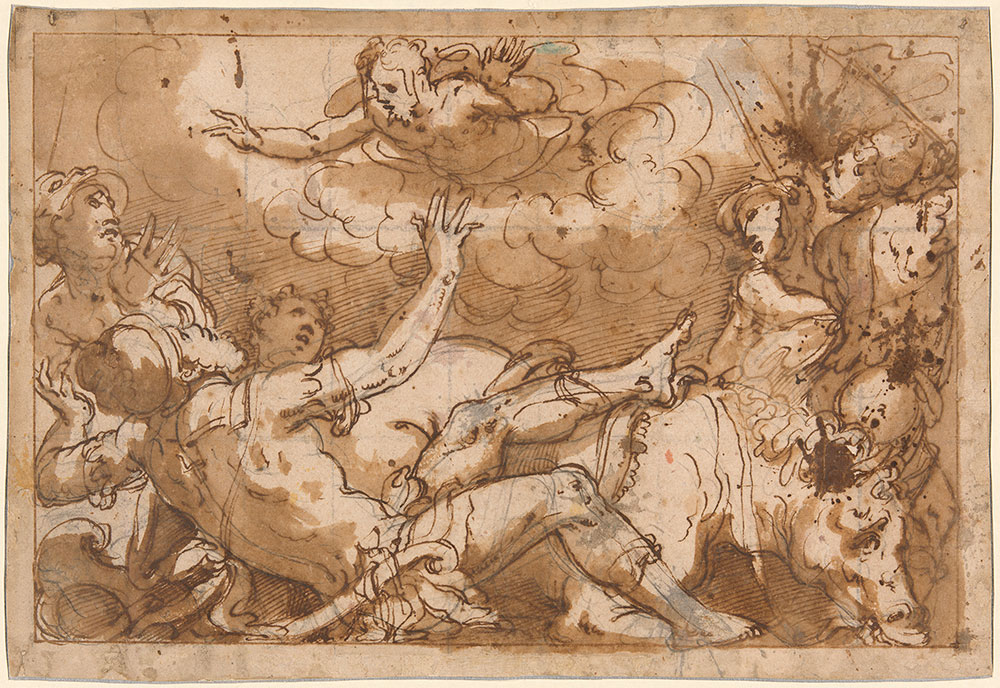
With quick, spidery lines in pen and ink, Vasari vivified Saint Paul’s heavenly vision of Christ on the road to Damascus. The artist’s approach to the biblical scene—particularly the close- cropped, horizontal format—differs notably from that of Lodovico Carracci, whose Conversion of Saint Paul appears elsewhere in the exhibition. This sketchwas a preparatory drawing for one of three frescoes that Vasari designed for a church ceiling vault in the central Italian town of Cortona. The paint stainson the right- hand side suggest that the drawing was used during the painting process.
Giorgio Vasari
Italian, 1511–1574
The conversion of Saint Paul, 1554
Pen and brown ink, and brush and brown wash, with splatters of gray, green, and pink paint, over black chalk, squared in black chalk
The Art Institute of Chicago, gift of Richard and Mary L. Gray; 2019.872
Gray Collection Trust, Art Institute of Chicago
Photography by Art Institute of Chicago Imaging Department
